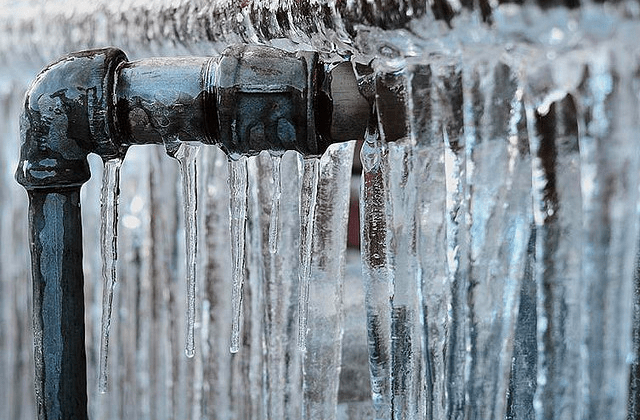Preventing Frozen Pipes in Cold Weather: Expert Strategies
Preventing Frozen Pipes in Cold Weather: Expert Strategies
Blog Article
We have stumbled on the article about Preventing and dealing with frozen pipes down the page on the internet and reckoned it made sense to discuss it with you on this page.

Cold weather can wreak havoc on your pipes, particularly by freezing pipes. Below's just how to stop it from occurring and what to do if it does.
Introduction
As temperature levels drop, the risk of frozen pipes boosts, potentially causing costly repair work and water damage. Understanding how to avoid icy pipelines is crucial for homeowners in cool environments.
Avoidance Tips
Insulating at risk pipes
Wrap pipelines in insulation sleeves or utilize warm tape to safeguard them from freezing temperatures. Focus on pipes in unheated or external locations of the home.
Home heating methods
Maintain indoor areas effectively heated up, particularly areas with pipes. Open cabinet doors to permit warm air to distribute around pipes under sinks.
How to recognize frozen pipelines
Seek decreased water circulation from faucets, uncommon smells or sounds from pipelines, and noticeable frost on revealed pipelines.
Long-Term Solutions
Architectural adjustments
Consider rerouting pipes away from exterior wall surfaces or unheated locations. Include additional insulation to attics, basements, and crawl spaces.
Updating insulation
Buy high-grade insulation for pipelines, attic rooms, and walls. Appropriate insulation assists preserve consistent temperature levels and lowers the risk of icy pipelines.
Securing Exterior Plumbing
Yard hose pipes and exterior faucets
Separate and drain pipes garden pipes prior to winter. Set up frost-proof spigots or cover outdoor faucets with insulated caps.
Understanding Icy Pipelines
What creates pipelines to freeze?
Pipelines ice up when revealed to temperatures listed below 32 ° F (0 ° C) for prolonged periods. As water inside the pipelines ices up, it expands, putting pressure on the pipeline wall surfaces and potentially creating them to break.
Risks and problems
Frozen pipelines can cause supply of water disruptions, home damage, and pricey repairs. Burst pipes can flood homes and cause substantial structural damage.
Signs of Frozen Pipeline
Determining frozen pipes early can stop them from rupturing.
What to Do If Your Pipelines Freeze
Immediate activities to take
If you think icy pipes, maintain faucets available to ease pressure as the ice thaws. Use a hairdryer or towels taken in warm water to thaw pipes gradually.
Final thought
Stopping frozen pipes calls for aggressive procedures and quick feedbacks. By comprehending the causes, indicators, and preventive measures, property owners can shield their plumbing during cold weather.
5 Ways to Prevent Frozen Pipes
Drain Outdoor Faucets and Disconnect Hoses
First, close the shut-off valve that controls the flow of water in the pipe to your outdoor faucet. Then, head outside to disconnect and drain your hose and open the outdoor faucet to allow the water to completely drain out of the line. Turn off the faucet when done. Finally, head back to the shut-off valve and drain the remaining water inside the pipe into a bucket or container. Additionally, if you have a home irrigation system, you should consider hiring an expert to clear the system of water each year.
Insulate Pipes
One of the best and most cost-effective methods for preventing frozen water pipes is to wrap your pipes with insulation. This is especially important for areas in your home that aren’t exposed to heat, such as an attic. We suggest using foam sleeves, which can typically be found at your local hardware store.
Keep Heat Running at 65
Your pipes are located inside your walls, and the temperature there is much colder than the rest of the house. To prevent your pipes from freezing, The Insurance Information Institute suggests that you keep your home heated to at least 65 degrees, even when traveling. You may want to invest in smart devices that can keep an eye on the temperature in your home while you’re away.
Leave Water Dripping
Moving water — even a small trickle — can prevent ice from forming inside your pipes. When freezing temps are imminent, start a drip of water from all faucets that serve exposed pipes. Leaving a few faucets running will also help relieve pressure inside the pipes and help prevent a rupture if the water inside freezes.
Open Cupboard Doors
Warm your kitchen and bathroom pipes by opening cupboards and vanities. You should also leave your interior doors ajar to help warm air circulate evenly throughout your home.
:strip_icc()/snow-outdoor-faucet-pipes-4af65d1e5e904fb1aa7bf74071fe5d89.jpg)
As a person who reads about How to prepare your home plumbing for winter weather, I assumed sharing that excerpt was a great idea. In case you enjoyed reading our page please make sure you remember to pass it around. We take joy in your readership.
Call Today Report this page